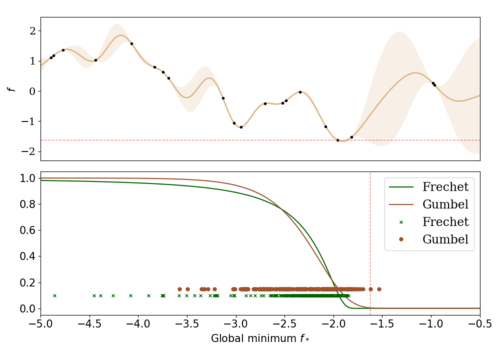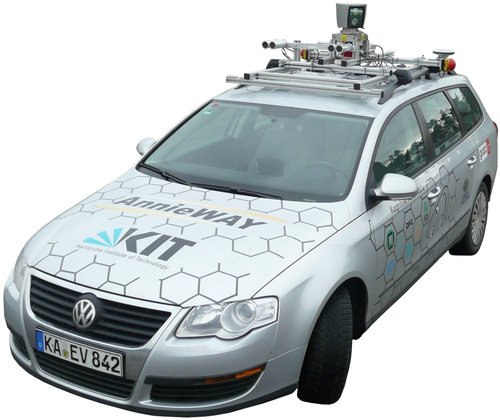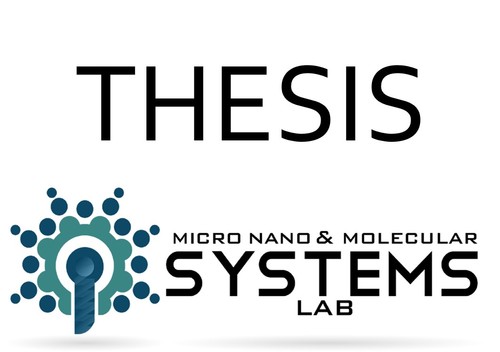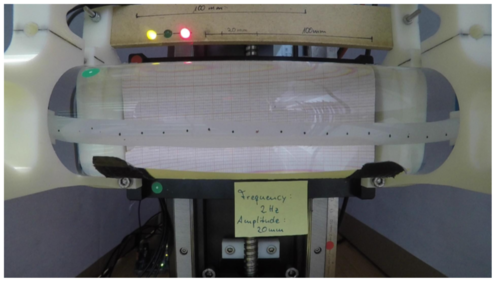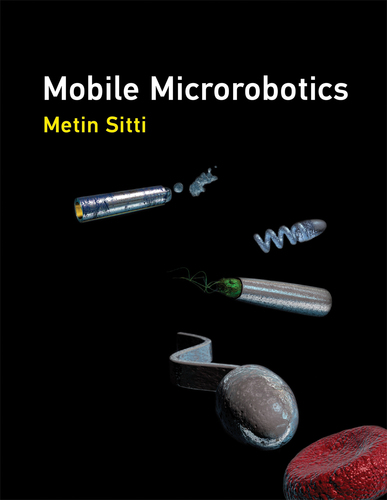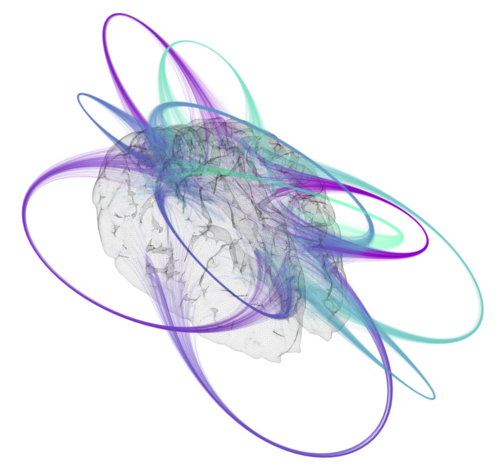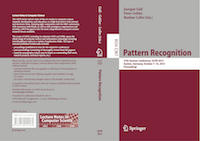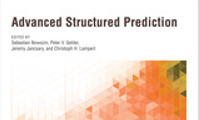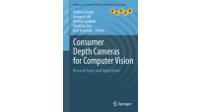2022
ei
Schölkopf, B., Uhler, C., Zhang, K.
Proceedings of the First Conference on Causal Learning and Reasoning (CLeaR 2022)
177, Proceedings of Machine Learning Research, PMLR, April 2022 (proceedings)
2021
ei
Field, A., Prabhumoye, S., Sap, M., Jin, Z., Zhao, J., Brockett, C.
Proceedings of the 1st Workshop on NLP for Positive Impact
Association for Computational Linguistics, August 2021 (proceedings)
ei
Belousov, B., H., A., Klink, P., Parisi, S., Peters, J.
Reinforcement Learning Algorithms: Analysis and Applications
883, Studies in Computational Intelligence, Springer International Publishing, 2021 (book)
2020
icm
Dertli, Denis
Nichtgleichgewichtsdynamik einer abgekühlten kritischen Flüssigkeit mit Oberflächenfeldern unterschiedlichen Vorzeichens
Universität Stuttgart, Stuttgart, January 2020 (thesis)
am
ics
Marco, A., Rohr, A. V., Baumann, D., Hernández-Lobato, J. M., Trimpe, S.
Excursion Search for Constrained Bayesian Optimization under a Limited Budget of Failures
2020 (proceedings) In revision
avg
Janai, J., Güney, F., Behl, A., Geiger, A.
Computer Vision for Autonomous Vehicles: Problems, Datasets and State-of-the-Art
Arxiv, Foundations and Trends in Computer Graphics and Vision, 2020 (book)
2019
ei
Lutz, P.
Automatic Segmentation and Labelling for Robot Table Tennis Time Series
Technical University Darmstadt, Germany, August 2019 (thesis)
icm
Pranjić, Daniel
Fluctuating interface with a pinning potential
Universität Stuttgart, Stuttgart, 2019 (thesis)
mms
Keskinbora, K.
Prototyping Micro- and Nano-Optics with Focused Ion Beam Lithography
SL48, pages: 46, SPIE.Spotlight, SPIE Press, Bellingham, WA, 2019 (book)
icm
Beyer, David Bernhard
Controlling pattern formation in the confined Schnakenberg model
Universität Stuttgart, Stuttgart, 2019 (thesis)
pf
Itzigehl, Selina
HPLC separation of ligand-exchanged gold clusters with atomic precision
Univ. of Stuttgart, 2019 (thesis)
2018
dlg
Richter, J.
Untersuchung und Charakterisierung von Teilelementen der Modifikation im Lumbosacralbereich von Vögeln
Hochschule Harz, 2018 (thesis)
icm
Maihöfer, Michael
Pattern forming systems under confinement
Universität Stuttgart, Stuttgart, 2018 (thesis)
icm
Bebon, Rick
Electrostatic interaction between colloids with constant surface potentials at fluid interfaces
Universität Stuttgart, Stuttgart, 2018 (thesis)
icm
Wilke, Moritz
Non-equilibrium dynamics of a binary solvent around heated colloidal particles
Universität Stuttgart, Stuttgart, 2018 (thesis)
icm
Meiler, Tim
Monte Carlo study of colloidal structure formation at fluid interfaces
Universität Stuttgart, Stuttgart, 2018 (thesis)
pf
Hornberger, Lea-Sophie
DNA-linked gold nanoclusters
Univ. of Stuttgart, 2018 (thesis)
icm
Sattler, Alexander
Surface structure of liquid crystals
Universität Stuttgart, Stuttgart, 2018 (thesis)
pf
Vogt, Pascal
HPLC-Trennung von Gold-clustern
Univ. of Stuttgart, 2018 (thesis)
2017
ei
Peters, J., Janzing, D., Schölkopf, B.
Elements of Causal Inference - Foundations and Learning Algorithms
Adaptive Computation and Machine Learning Series, The MIT Press, Cambridge, MA, USA, 2017 (book)
icm
Hölzl, Christian
Non-equilibrium forces after temperature quenches in ideal fluids with conserved density
Universität Stuttgart, Stuttgart, 2017 (thesis)
pf
Troll, Jonas
Enzyme activity and transport in biological media
Univ. of Stuttgart, 2017 (thesis)
pi
Sitti, M.
Mobile Microrobotics
Mobile Microrobotics, The MIT Press, Cambridge, MA, 2017 (book)
pf
Segreto, Nico
Propulsion of magnetic colloids at low Reynolds number
Univ. of Stuttgart, 2017 (thesis)
zwe-sw
Bramlage, L.
Design of a visualization scheme for functional connectivity data of Human Brain
Hochschule Osnabrück - University of Applied Sciences, 2017 (thesis)
icm
Schmetzer, Timo
Electrostatic interaction between non-identical charged particles at an electrolyte interface
Universität Stuttgart, Stuttgart, 2017 (thesis)
2016
ei
Ihler, A. T., Janzing, D.
Proceedings of the 32nd Conference on Uncertainty in Artificial Intelligence (UAI)
pages: 869 pages, AUAI Press, June 2016 (proceedings)
2015
ps
Gall, J., Gehler, P., Leibe, B.
Proceedings of the 37th German Conference on Pattern Recognition
Springer, German Conference on Pattern Recognition, October 2015 (proceedings)
2014
ps
Nowozin, S., Gehler, P. V., Jancsary, J., Lampert, C. H.
Advanced Structured Prediction
Advanced Structured Prediction, pages: 432, Neural Information Processing Series, MIT Press, November 2014 (book)
ei
Kober, J., Peters, J.
Learning Motor Skills: From Algorithms to Robot Experiments
97, pages: 191, Springer Tracts in Advanced Robotics, Springer, 2014 (book)
2013
ei
Deisenroth, M., Szepesvári, C., Peters, J.
Proceedings of the 10th European Workshop on Reinforcement Learning, Volume 24
pages: 173, JMLR, European Workshop On Reinforcement Learning, EWRL, 2013 (proceedings)
ei
Schölkopf, B., Luo, Z., Vovk, V.
Empirical Inference - Festschrift in Honor of Vladimir N. Vapnik
Springer, 2013 (book)
2012
ei
Langs, G., Rish, I., Grosse-Wentrup, M., Murphy, B.
Machine Learning and Interpretation in Neuroimaging - Revised Selected and Invited Contributions
pages: 266, Springer, Heidelberg, Germany, International Workshop, MLINI, Held at NIPS, 2012, Lecture Notes in Computer Science, Vol. 7263 (proceedings)
ei
Panagiotaki, E., O’Donnell, L., Schultz, T., Zhang, G.
MICCAI, Workshop on Computational Diffusion MRI, 2012 (electronic publication)
15th International Conference on Medical Image Computing and Computer Assisted Intervention (MICCAI), Workshop on Computational Diffusion MRI , 2012 (proceedings)
al
Der, R., Martius, G.
The Playful Machine - Theoretical Foundation and Practical Realization of Self-Organizing Robots
Springer, Berlin Heidelberg, 2012 (book)
ps
Fossati, A., Gall, J., Grabner, H., Ren, X., Konolige, K.
Consumer Depth Cameras for Computer Vision - Research Topics and Applications
Advances in Computer Vision and Pattern Recognition, Springer, 2012 (book)
2011
ei
Sra, S., Nowozin, S., Wright, S.
Optimization for Machine Learning
pages: 494, Neural information processing series, MIT Press, Cambridge, MA, USA, December 2011 (book)
ei
Barber, D., Cemgil, A., Chiappa, S.
Bayesian Time Series Models
pages: 432, Cambridge University Press, Cambridge, UK, August 2011 (book)
ei
Kakade, S., von Luxburg, U.
JMLR Workshop and Conference Proceedings Volume 19: COLT 2011
pages: 834, MIT Press, Cambridge, MA, USA, 24th Annual Conference on Learning Theory , June 2011 (proceedings)
ei
Lu, H., Schölkopf, B., Zhao, H.
Handbook of Statistical Bioinformatics
pages: 627, Springer Handbooks of Computational Statistics, Springer, Berlin, Germany, 2011 (book)
am
11th IEEE-RAS International Conference on Humanoid Robots (Humanoids 2011), Bled, Slovenia, October 26-28, 2011
IEEE, 2011 (proceedings)
2010
ei
Guyon, I., Janzing, D., Schölkopf, B.
JMLR Workshop and Conference Proceedings: Volume 6
pages: 288, MIT Press, Cambridge, MA, USA, Causality: Objectives and Assessment (NIPS Workshop) , February 2010 (proceedings)
ei
Sigaud, O., Peters, J.
From Motor Learning to Interaction Learning in Robots
pages: 538, Studies in Computational Intelligence ; 264, (Editors: O Sigaud, J Peters), Springer, Berlin, Germany, January 2010 (book)
mms
Hirscher, M.
Handbook of Hydrogen Storage
pages: 353 p., Wiley-VCH, Weinheim, 2010 (book)
2008
ei
Lespérance, Y., Lakemeyer, G., Peters, J., Pirri, F.
CogRob 2008: The 6th International Cognitive Robotics Workshop
Proceedings of the 6th International Cognitive Robotics Workshop (CogRob 2008), pages: 35, Patras University Press, Patras, Greece, 6th International Cognitive Robotics Workshop (CogRob), July 2008 (proceedings)
2007
ei
Bakir, G., Hofmann, T., Schölkopf, B., Smola, A., Taskar, B., Vishwanathan, S.
Predicting Structured Data
pages: 360, Advances in neural information processing systems, MIT Press, Cambridge, MA, USA, September 2007 (book)
ei
Schölkopf, B., Platt, J., Hofmann, T.
Advances in Neural Information Processing Systems 19: Proceedings of the 2006 Conference
Proceedings of the Twentieth Annual Conference on Neural Information Processing Systems (NIPS 2006), pages: 1690, MIT Press, Cambridge, MA, USA, 20th Annual Conference on Neural Information Processing Systems (NIPS), September 2007 (proceedings)
2006
ei
Chapelle, O., Schölkopf, B., Zien, A.
Semi-Supervised Learning
pages: 508, Adaptive computation and machine learning, MIT Press, Cambridge, MA, USA, September 2006 (book)
ei
Weiss, Y., Schölkopf, B., Platt, J.
Advances in Neural Information Processing Systems 18: Proceedings of the 2005 Conference
Proceedings of the 19th Annual Conference on Neural Information Processing Systems (NIPS 2005), pages: 1676, MIT Press, Cambridge, MA, USA, 19th Annual Conference on Neural Information Processing Systems (NIPS), May 2006 (proceedings)


